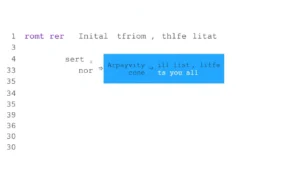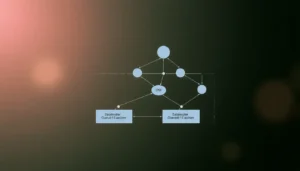Odessa massacre Holocaust: Truths, Trials, and Memory
- THE MAG POST

- Aug 25
- 12 min read

Odessa massacre Holocaust reveals how occupation, antisemitic policy, and wartime logistics converged to annihilate communities in 1941–42. Across Odessa and surrounding towns, tens of thousands of Jewish residents were arrested, deported, or killed as authorities sought to reshape the region along brutal lines. This opening sets the stage for a careful, expansive exploration that respects memory while probing the choices, pressures, and collateral consequences of siege, collaboration, and occupation. The narrative that follows expands beyond dates and numbers, offering context, testimonies, and the ways in which later generations remember and study this tragedy to teach future generations about vigilance, humanity, and the limits of authority.
Odessa massacre Holocaust: Origins, Siege, and the Seed of Atrocity
Odessa massacre Holocaust describes a confluence of military conquest and ideological intent that transformed ordinary urban life into a landscape of fear. The fall of the city after a two‑month confrontation magnified the power of occupying forces and established the framework for rapid, brutal action against Jews and other perceived enemies. The events that followed would not be a single act but a sequence of orders, executions, and forced relocations that rippled through the surrounding towns and villages, turning neighbors into complicit witnesses or unwilling participants in a larger project of ethnic cleansing. This section traces how a city renowned for commerce and cultural diversity became a hub of coercion and annihilation under Romanian and German leadership, and how early decisions shaped the scale of subsequent crimes.
Odessa massacre Holocaust: Prelude to Atrocity
The prelude to the massacre involved a complex set of military and political calculations. Occupying authorities consolidated power through registration, surveillance, and the confiscation of property, leveraging existing anti‑Jewish attitudes to justify swift, punitive measures. Local collaborators, police formations, and newly formed battalions played a crucial role in identifying and segregating Jewish residents, while coercive decrees tightened the noose around community life. Across neighborhoods and markets, the atmosphere shifted from ordinary street rhythms to the ominous cadence of arrests, forced relocations, and the constant threat of indiscriminate violence. These early steps foreshadowed a more systematic and impersonal regime of control that would erupt into mass killings and deportations.
As the siege ended and occupation became the new normal, the lines between military necessity and genocidal policy blurred. The occupying powers framed resistance, escapes, and survival as acts of defiance, while simultaneously orchestrating a bureaucratic apparatus designed to dehumanize and dispossess. The interplay between strategic imperatives and ethnic ideology created a combustible environment in which ordinary decisions—where to live, whom to trust, whom to shelter—could determine life or death. Understanding this prelude is essential to grasping the rapid escalation that would soon manifest in mass shootings, confinement, and the dismantling of Odessa’s Jewish community.
Odessa massacre Holocaust: 22–24 October 1941 Events
The window of 22–24 October 1941 marks a turning point when the occupation regime unleashed a wave of violence against Jews and perceived opponents. Reports describe coordinated actions by Romanian troops, units of the German Einsatzgruppe, and local collaborators who stormed districts, raided apartments, and rounded up thousands of residents for execution or confinement. The brutality was methodical—piled bodies, mass graves, and the forced relocation of survivors to camps in the countryside. The events are not only a record of killings but also a testimony to how administrative machinery can convert terror into a tool of policy, leaving a scar that would persist long after the guns fell silent.
In the chaos of the bombardments and raids, many families were separated and communities shattered. The killings took place in open spaces, en route convoys, and at designated slaughter sites; the sheer randomness of the violence intensified trauma for witnesses and survivors alike. The aftermath included a deeper fear that would permeate daily life, as people learned to navigate a city where strangers might be the agents of death, and where the moral foundations of ordinary civility were upended by wartime brutality.
Odessa massacre Holocaust: The Explosions, Reprisals, and Immediate Aftermath
Odessa massacre Holocaust thereupon reveals how a single event can cascade into broader cycles of reprisal, collective punishment, and social upheaval. Following key incidents, occupying authorities escalated arrests and mass executions, driving populations into makeshift camps and insecure havens. The immediate aftermath saw a drastic reordering of urban life, with curfews, surveillance, and a stepped‑up regime of inspections that targeted Jewish residents and other marginalized groups. The city’s sense of normalcy dissolved as fear became a constant companion, and every corner of the urban tapestry bore the marks of violence and coercion.
Odessa massacre Holocaust: Mass Executions and Street Killings
Street by street, block by block, occupiers conducted summary executions that erased entire neighborhoods in a matter of hours. Lerned accounts describe the roundups, the forced marches to open fields, and the use of anti‑tank ditches as killing grounds. The brutality extended to settings that once served as community gathering points—markets, courtyards, apartment blocks—where residents were hunted down and shot. The scale of these killings dwarfed typical wartime violence, illustrating a calculated policy that sought to eradicate a population rather than defeat an army. Survivors later recounted the smashed windows of once‑familiar homes and the silent testimonies of neighbors who watched but could not intervene.
Survivor testimonies and archival material indicate that many victims faced immediate death or brutal injuries, while others endured days of fear and uncertainty before death finally arrived. The violence was not only physical but also psychological, leaving families to confront bewildering losses and communities to grapple with guilt and complicity. Even in the wake of these horrors, some individuals found ways to resist, hide, or smuggle aid, setting the stage for later acts of remembrance and small acts of courage amid overwhelming danger.
Odessa massacre Holocaust: Registration, Confinement, and Regulatory Brutality
Odessa massacre Holocaust exposes the chilling logic of bureaucratic anti‑Semitism that accompanied violence with paperwork, badges, and compulsory reporting. As registration rolled out, Jewish residents were branded with identifying badges and forced to report to prisons, a procedural veneer over the brutal realities of captivity. The intent was not only to isolate but to strip dignity and autonomy, transforming people into data points within a cruel system. Such regulatory brutality normalized surveillance and made everyday life perilous, ensuring that dissent or noncompliance would invite swift, often deadly punishment.
Odessa massacre Holocaust: The Yellow Badge and Forced Registration
Registration procedures institutionalized discrimination, requiring Jews to display markers that publicly labeled them as targets. The bureaucratic language masked a policy of segregation, asset seizure, and future deportations. Families were separated by age, ability to work, and perceived loyalty to the regime, with the administrative machinery coordinating with military authorities to illustrate the reach of antifederal control. The badge marked not only a social penalty but also a practical hazard, as it made residents more visible to patrols and more vulnerable to arbitrary arrest or removal from the city’s shrinking urban space.
As registration continued, other directives intensified the squeeze on daily life. Authorities demanded declarations of valuables, controlled movements, and rigid timetables for reporting to facilities. The cumulative effect was dehumanization through paperwork, turning intimate belongings into instruments of state expropriation. The narrative of bureaucratic oppression shows how the machinery of occupation operated on multiple fronts: legal, logistical, and symbolic, all contributing to a climate where violence could be justified as law enforcement rather than atrocity.
Odessa massacre Holocaust: Concentration Camps and Forced Deportations
Concentration camps emerged as the pragmatic solution to housing the displaced and managing the increasing refugee and prisoner populations. Villages such as Bogdanovka became sites where Jews were gathered, stripped of possessions, and subjected to brutal conditions before transportation to Golta, Domanevka, and other camps. The march toward deportation was marked by harsh winter conditions, hunger, and the constant threat of random executions along the routes. The physical journey was as devastating as the captivity, transforming a city’s outskirts into a corridor of suffering that stretched into the countryside and beyond.
The deportations united the fates of many who otherwise had no direct connection, forging a shared experience of humiliation and fear. The camps functioned as nodes in a wider network of repression that extended into the rural periphery, where local collaborators enforced order and the German and Romanian guards oversaw the mass killings. The orchestration of these camps highlights how the logistics of war can become a mechanism of extermination when coupled with fanatical ideology and ruthless coercion.
Odessa massacre Holocaust: Ghettos, Domanevka, and the Slobodka Enclave
Odessa massacre Holocaust maps the spatial evolution of forced confinement, from city ghettos to remote villages. In 1942, the ghetto in Slobodka became a grim epicenter where overcrowding, hunger, and exposure compounded the horror of captivity. The transformation of urban districts into detention hubs reflected a broader strategy of isolating the Jewish population from the rest of society, while allowing guards to exert full control over daily life. The ghetto system also created opportunities for resistance, education, and solidarity among prisoners, even as harsh conditions persisted and mortality mounted due to deprivation and cold.
Odessa massacre Holocaust: Ghettoization in Transnistria
The ghettoization process reconfigured Odessa’s urban geography, concentrating thousands of residents into stark, overcrowded quarters with limited access to heat, water, and medical care. The arrangement of Domanevka and other settlements within the larger Transnistria framework reflected a deliberate strategy to degrade living conditions while enabling efficient surveillance and transport to camps. In this forced confinement, community networks persisted through clandestine education, mutual aid, and underground organizing, which would later contribute to memory work and resistance efforts that outlived the occupation itself.
Within the walls of the Slavodka and nearby ghettos, daily routines became a mixture of endurance and defiance. Inmates organized informal schools, shared scarce food, and preserved cultural rituals as acts of spiritual survival. The human stories that emerged from these struggles reveal resilience and ingenuity in the face of systematic deprivation, providing essential lessons about dignity, community support, and the moral complexities of survival under tyranny.
Odessa massacre Holocaust: Bogdanovka and Golta Camps
Bogdanovka and Golta camps functioned as the operational core of deportations, where large groups endured brutal regimes and brutal weather. Prisoners faced starvation, exposure, and violent enforcement by Romanian soldiers, SS personnel, Ukrainian police, and local collaborators. The road to Golta became a corridor of death for many, while others endured for months or years in hopes of liberation, which arrived only through the collapse of occupation or the testimony of survivors. These camps illustrate how imprisonment, forced labor, and mass executions were integrated into a coherent system designed to erase communities.
Despite the relentless brutality, acts of solidarity persisted among prisoners and some local supporters. Aid from Jewish organizations in Romania reached into these camps, providing limited sustenance, morale boosts, and hopeful connections to the outside world. The memory of Bogdanovka and Golta endures in survivor testimonies, archival records, and the ongoing work of museums and memorials that seek to honor those who perished and to educate future generations about the dangers of hatred and unchecked power.
Odessa massacre Holocaust: The Long Shadow — Death Marches and Postwar Reckoning
Odessa massacre Holocaust left a long shadow, evidenced by death marches, mass graves, and the stubborn persistence of memory. As frontlines shifted and regimes changed, the violence was not immediately halted; instead, new waves of deportations and executions continued into early 1942. After the war, investigators uncovered mass graves and firsthand accounts, while trials and historical commissions across Europe confronted the crimes committed in the name of occupation. The lingering question was how to acknowledge and remember these acts in ways that honor victims without reviving cycles of grievance. The memory work that followed became an essential component of regional and national identity in the postwar era.
Odessa massacre Holocaust: Death Marches and Camp Aftermath
A grim pattern emerged as survivors and witnesses recounted the forced marches and deadly transfers between camps. The unheated trains and long treks exposed prisoners to freezing temperatures, hunger, and disease, while guards maintained strict discipline and rapid dispersal. In Berezivka and other locales, groups faced additional trials, with many dying before reaching their destination or along the way. The aftershocks of these journeys reverberated through families and communities, shaping memories of loss, resilience, and the brutal calculus of survival under occupation.
Even as some prisoners survived by sheer luck or aid from outside networks, the overall mortality remained staggering. The Golta complex, the Domanevka ghetto, and associated sites became central to postwar historical inquiry, memorialization, and education. The stories of those who endured and perished continue to inform contemporary discussions about victims’ rights, restitution, and the ongoing obligations of societies to confront uncomfortable chapters of their past.
Odessa massacre Holocaust: Postwar Trials and Reconciliation
In the immediate postwar years, courts and tribunals began to address the crimes committed in Odessa and Transnistria, balancing accountability with the political realities of the emerging Cold War order. The Bucharest trials, adjudications against Ion Antonescu’s circle, and later revisions reflected shifting priorities as nations sought to establish legal and moral legitimacy after catastrophe. The processes were imperfect and contested, but they established a framework for recognizing responsibility and delivering judgments that acknowledged the human costs of occupation. These legal proceedings contributed to the broader historical record and the ongoing discourse on war crimes and accountability.
Beyond the courts, memory cultures in Ukraine, Romania, and international communities established memorials, museums, and commemorative rituals. The Odessa Museum of the Holocaust and memorial sites along the road of death served as focal points for education, remembrance, and dialogue. These efforts represented a humanistic response to atrocity, aiming to prevent repetition by building empathy, encouraging critical inquiry, and fostering respect for the dignity of every life—even those extinguished by war and fanaticism.
Odessa massacre Holocaust: Memory, Memorials, and Global Remembrance
Odessa massacre Holocaust memory is not a relic of the past but a living discipline that informs contemporary ethics, education, and policy. Communities worldwide confront the challenge of teaching younger generations about genocide in a way that honors victims while encouraging critical thinking about power, propaganda, and responsibility. The museums, alleys, and monuments associated with the Odessa tragedy stand as testimonies to resilience and as calls to action for future generations to confront hatred, defend human rights, and uphold the memory of those who perished in the name of intolerance.
Odessa massacre Holocaust: Local Memory and International Outreach
The memory of the Odessa massacre extends beyond local commemorations to international collaborations and scholarly exchanges. Museums in Odesa, Romania, and other European sites work together to preserve archives, share survivor testimonies, and develop educational programs that contextualize the event within the broader Holocaust narrative. Community gatherings, lectures, and virtual archives foster a sense of global responsibility to remember, educate, and confront antisemitism in all its forms. The interplay between local memory and international dialogue enhances the resilience of historical testimony and strengthens commitments to human rights across borders.
Educational initiatives emphasize critical inquiry into sources, biases, and the dynamics of occupation. By examining maps, testimonies, and archival documents, learners gain a nuanced understanding of how state policies translated into human suffering. The Odessa tragedy thus becomes a case study in the dangers of totalitarianism and the necessity of safeguarding democratic norms, judicial accountability, and intercultural understanding in an increasingly interconnected world.
Odessa massacre Holocaust: Memorials, Museums, and Civic Education
Memorials and museums dedicated to the Odessa victims provide spaces for reflection, dialogue, and learning. Public art, plaques, and dedicated spaces invite visitors to consider the human dimension of history, moving beyond statistics to engage with personal narratives and moral questions. These institutions often host educational programs, collaborative projects with schools, and exhibitions that examine the causes and consequences of persecution, while highlighting acts of courage and compassion that occurred during occupation. The goal is to translate memory into lifelong civic responsibility and inclusive memory culture.
In addition to physical memorials, digital archives and documentary projects broaden access to primary sources, enabling researchers, students, and curious readers to explore the timeline of events, witness accounts, and judicial outcomes. The Odessa tragedy remains a potent reminder that memory is not inert; it evolves with scholarship, witness testimony, and social ethics. By maintaining a robust, nuanced public record, communities honor the dead and empower others to confront prejudice with knowledge and compassion.
Odessa massacre Holocaust: The Final Takeaways — Lessons for Memory and Justice
Odessa massacre Holocaust offers sobering lessons on how political expediency, bureaucratic mechanisms, and ideological hatred can converge to annihilate a people. Its enduring reminder is not only about the past but about the present: vigilance against propaganda, commitment to human rights, and responsibility to confront atrocities wherever they occur. By studying the sequence of events, memorials, and legal reckonings, we gain a clearer understanding of the fragility of civilization and the resilience of those who choose memory as a form of resistance against denial and indifference. The final takeaways emphasize education, accountability, and the enduring obligation to safeguard human dignity.
Odessa massacre Holocaust: Key Takeaways — Gratitude for Memory and Action
From the archives of tragedy emerge practical lessons: early warning systems for discrimination, robust documentation of abuses, and proactive remembrance that informs public policy and education. The Odessa narrative demonstrates that memory can mobilize communities to resist hatred, promote inclusion, and demand justice. By translating historical insight into contemporary action, scholars, educators, and citizens alike contribute to a future where such crimes are neither forgotten nor repeated, and where the memory of the dead fortifies our shared commitment to human rights and dignity.
In closing, the Odessa massacre Holocaust reminds us that the cost of silence is borne by the vulnerable. Recognizing this history with rigor, empathy, and public accountability is essential to building a more just society. The memory work—through museums, memorials, and informed dialogue—serves as a compass for ethical decision‑making today, guiding efforts to prevent recurrence and to honor those who perished through collective neglect or active harm. May their memory sharpen our conscience and strengthen our commitment to human rights for all.
Aspect | Summary |
Origins & Siege | Context of occupation, 1941–42, and the shift from city life to systematic persecution under Romanian and German control, setting the stage for mass violence. |
Key Dates | Major turning point occurred in late October 1941 with mass executions and the imposition of harsh wartime orders culminating in large‑scale deportations. |
Perpetrators | Romanian troops, Einsatzgruppe SS, and local ethnic collaborators, aided by police and auxiliary units across Odessa and surrounding towns. |
Confinement & Camps | Ghettos and countryside camps (Bogdanovka, Golta, Domanevka) used to imprison and deport Jews to execution or hard labor. |
Aftermath & Trials | Postwar trials held in Romania; accountability processes and evolving memory culture shaped by international and local memory initiatives. |
Memory & Memorials | Inclusion of memorials, museums, and educational programs to preserve victims’ memory and teach future generations about atrocity prevention. |






















































Comments